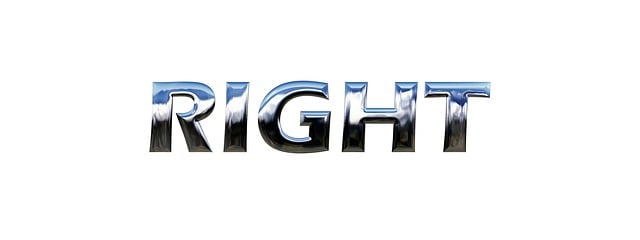To select the best business insurance, start by thoroughly understanding your company's unique risks and needs, comparing them across industries. Evaluate essential coverage areas like general liability, professional liability, workers' compensation, and property insurance. Carefully consider coverage limits and deductibles to balance protection with budget management, especially in high-risk sectors. Research insurer reputation for reliable claims handling and personalized service. Thoroughly review policy exclusions and conditions to identify potential gaps in protection. Customize your policy based on specific business risks and financial capacity. Finally, regularly reassess and update your insurance policy as your business evolves.
Selecting the optimal business insurance is a multifaceted process, crucial for mitigating risks and securing your organization’s future. This guide navigates the key factors in choosing coverage, from understanding your unique business needs and assessing potential risks to evaluating insurer reliability and customizing policy options. By considering these aspects, you’ll be equipped to make informed decisions on how to choose the right business insurance that aligns with your budget and protects your interests.
Understanding Your Business Needs and Risks

To choose the right business insurance, it’s crucial to first understand your unique business needs and risks. This involves assessing the nature of your operations, the industry you’re in, and potential hazards that could impact your company. For instance, a construction firm faces different risks than a tech startup; one requires coverage for workplace accidents and property damage, while the other might prioritize data protection and intellectual property insurance.
By evaluating these factors, you can identify what types of insurance are essential. This proactive approach ensures that your business is adequately protected against financial losses resulting from unforeseen events. It’s also beneficial to consider the legal requirements in your industry and region, as well as any specific coverage recommended by industry experts or professional associations.
Types of Business Insurance Policies

When considering how to choose the right business insurance, understanding the various types of policies available is a crucial first step. There are several key options designed to protect against different risks and scenarios. These include general liability insurance, which covers claims of bodily injury or property damage; professional liability insurance, also known as errors and omissions coverage, which protects against mistakes or negligence in your business practices; workers’ compensation insurance, mandatory in many places, that provides benefits for employees injured on the job; and property insurance to safeguard physical assets.
Each type of policy serves a unique purpose, catering to specific needs within a business. For instance, general liability is essential for most operations to mitigate risks from accidents or damage on your premises, while professional liability is critical for service-oriented businesses where errors can lead to significant financial and legal consequences. How to choose the right business insurance involves evaluating these options based on your industry, size, and specific operational risks.
Assessing Coverage Limits and Deductibles

When considering how to choose the right business insurance, assessing coverage limits and deductibles is a crucial step. These components play a significant role in protecting your business from financial loss in the event of unforeseen circumstances. Coverage limits determine the maximum amount your insurance policy will pay out for a specific claim, while deductibles are the amount you’re required to pay out-of-pocket before insurance coverage kicks in.
It’s essential to carefully evaluate these factors based on your business’s unique needs and risk profile. For instance, if your business operates in a high-risk industry with potential for significant liability claims, ensuring adequate coverage limits is vital. Similarly, understanding deductibles helps you prepare for the financial burden that may arise before insurance assistance becomes available. By balancing these elements thoughtfully, you can tailor your business insurance to offer comprehensive protection while aligning with your budget considerations.
Considering the Cost and Budget Impact

When considering business coverage, one of the primary factors is understanding how it fits within your budget. How to Choose the Right Business Insurance involves a delicate balance between securing adequate protection and managing financial obligations. Evaluate potential risks and their likelihood, then compare quotes from various insurers to find policies that align with both your risk appetite and monetary capabilities. Remember, insurance isn’t just about minimizing losses; it’s also about maintaining stability during unforeseen events.
Assess the cost not only of the premium but also associated expenses like deductibles and co-pays. Consider the impact on cash flow, especially for small businesses where profit margins are tighter. Long-term financial planning should factor in insurance costs to ensure you’re safeguarding your business’s future without unduly straining its resources. This strategic approach will help you select coverage that offers the right balance of protection and affordability.
Evaluating Insurer Reputation and Reliability

When choosing the right business insurance, evaluating the insurer’s reputation and reliability is a crucial step. Researching their track record, customer reviews, and financial stability can provide valuable insights into their level of service and commitment to their clients. Look for insurers with consistent positive feedback from previous policyholders, strong financial ratings from independent agencies, and a history of claims handling that meets your expectations.
Reputable insurance providers offer more than just policies; they build trust through transparent practices, clear communication, and prompt response times. Ensure the insurer you select has a well-established network of local agents or brokers who can provide personalized service and support. This accessibility is vital when you need to file a claim or have questions regarding your coverage.
Understanding Policy Exclusions and Conditions

Choosing the right business insurance involves a thorough understanding of policy exclusions and conditions. These are critical elements that can significantly impact your coverage and financial protection. Exclusions are specific events or circumstances that are not covered under your policy, while conditions are requirements you must meet to maintain valid coverage.
By reviewing these carefully, you gain insights into what’s protected and what’s not. This knowledge helps in making informed decisions when selecting insurance options. Understanding exclusions ensures you’re aware of potential gaps in your coverage, allowing for more comprehensive risk management. Similarly, comprehending conditions enables businesses to align their practices with policy requirements, ensuring continued protection and avoiding invalidation of claims.
Customizing Your Coverage Options

When considering how to choose the right business insurance, customizing your coverage options is a key factor. Every business is unique, with distinct needs and risks. What works for one might not be suitable for another. Therefore, it’s essential to carefully evaluate what specific risks your business faces, such as property damage, liability claims, or cyber threats. This involves understanding the various types of insurance policies available and selecting those that align precisely with your operational requirements.
Customizing doesn’t stop at policy types; it also includes adjusting coverage limits and deductibles. Higher limits offer more protection but come at a higher cost, while lower limits may not adequately cover significant losses. Deductibles, the amount you pay out-of-pocket before insurance kicks in, should be set based on your business’s financial capacity to absorb unexpected expenses. By tailoring these elements, you ensure that your business is protected effectively and affordably.
Regularly Reviewing and Updating Your Policy

How to Choose the Right Business Insurance also involves regularly reviewing and updating your policy. As your business grows, changes in the market, or new regulations come into effect, your insurance needs may change accordingly. A key aspect of effective risk management is ensuring that your coverage keeps pace with these shifts. Regularly reassess your policy to confirm it still aligns with your business’s current risks and exposure.
Make it a point to review your policy at least once a year or whenever significant changes occur in your operations, industry standards, or legal requirements. This proactive approach will help you avoid gaps in coverage that could prove detrimental during unforeseen events. By staying on top of your insurance policy, you can safeguard against potential losses and ensure uninterrupted business continuity.
